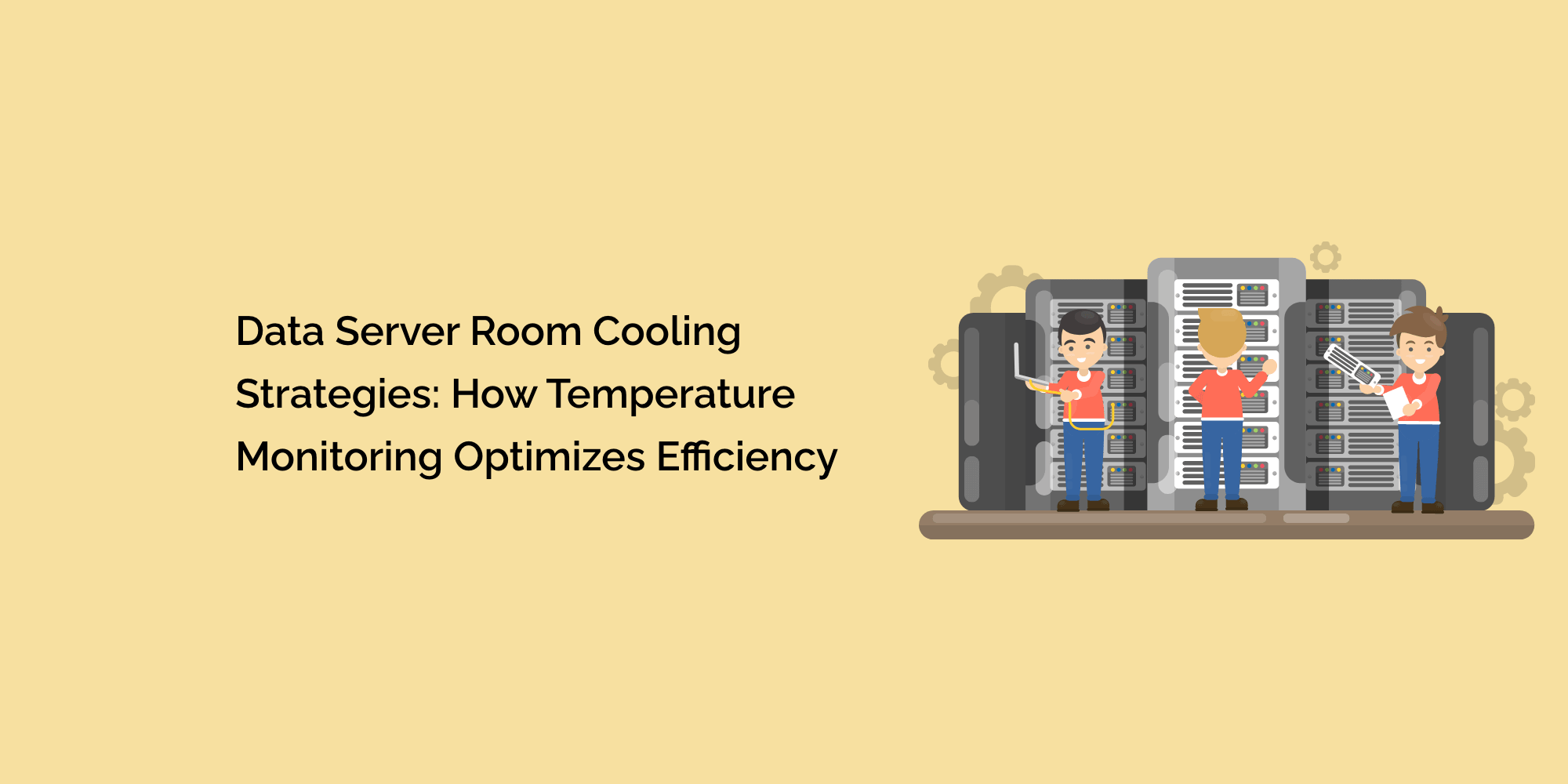In the modern digital landscape, data servers are the backbone of businesses and organizations, storing and processing vast amounts of critical information. These servers are powered by complex hardware components that generate substantial heat during data processing. Efficient cooling strategies are essential to maintain optimal performance and prevent hardware failures. Temperature monitoring plays a crucial role in optimizing data server room cooling strategies, ensuring efficient operations, reducing energy consumption, and extending hardware lifespan. In this comprehensive blog, we will explore the significance of data server room cooling, the impact of temperature monitoring on efficiency, and best practices for maintaining a well-cooled server environment.
The Importance of Data Server Room Cooling:
Data servers operate under immense computational loads, generating significant heat that can lead to overheating and potential hardware failures. Cooling is critical for the following reasons:
-
Hardware Performance: Cooling systems maintain the server room temperature within the optimal range to ensure hardware components perform at their best.
-
Hardware Longevity: Proper cooling extends the lifespan of hardware components, reducing the need for frequent replacements.
-
Energy Efficiency: Efficient cooling reduces energy consumption, leading to cost savings and a more environmentally friendly data center.
-
Reliability: A well-cooled environment reduces the risk of hardware failures, improving overall data center reliability.
- Preventing Thermal Throttling: Cooling prevents thermal throttling, where servers reduce performance to avoid overheating.
The Role of Temperature Monitoring in Cooling Strategies:
Temperature monitoring is an integral part of effective data server room cooling. By constantly monitoring the temperature, data center administrators can optimize cooling strategies and prevent potential issues. Here's why temperature monitoring is crucial for cooling efficiency:
-
Real-Time Insights: Temperature monitoring provides real-time insights into server room conditions, allowing administrators to identify fluctuations and anomalies promptly.
-
Early Issue Detection: Administrators can detect temperature-related issues early on, enabling proactive responses before they escalate.
-
Data-Driven Decision Making: Data from temperature monitoring enables data center administrators to make informed decisions on cooling strategies.
-
Energy Efficiency Optimization: Monitoring helps fine-tune cooling systems for optimal energy efficiency.
- Remote Access and Alerts: Remote access and alerts enable administrators to receive real-time notifications when temperatures deviate from the optimal range.
Data Server Room Cooling Strategies:
To optimize data server room cooling, consider the following strategies:
-
Efficient Cooling Systems: Install energy-efficient cooling systems that can handle the heat generated by data servers.
-
Hot Aisle/Cold Aisle Containment: Implement hot aisle/cold aisle containment to separate hot and cold air streams, improving cooling efficiency.
-
Proper Airflow Management: Organize server racks to allow for proper airflow, reducing the risk of hotspots and maximizing cooling effectiveness.
-
Temperature Sensors: Install temperature sensors in strategic locations within the server room to monitor temperature variations effectively.
-
Redundant Monitoring: Implement redundant temperature monitoring systems to ensure continuous monitoring, even during system failures or outages.
-
Remote Access and Alerts: Utilize temperature monitoring systems with remote access and alert capabilities for immediate response to temperature fluctuations.
-
Cooling System Maintenance: Perform regular maintenance of cooling systems, including filter replacements and coil cleaning.
- Humidity Control: Monitor and maintain optimal humidity levels to prevent condensation and potential water damage.
Benefits of Temperature Monitoring for Cooling Efficiency:
Efficient temperature monitoring provides several benefits for data server room cooling strategies:
-
Energy Savings: Data-driven cooling strategies enable data centers to optimize cooling efficiency and reduce energy consumption.
-
Improved Hardware Reliability: Maintaining optimal temperatures ensures hardware components perform reliably and last longer.
-
Reduced Downtime: Proactive temperature monitoring minimizes the risk of temperature-related failures, leading to reduced downtime and improved service availability.
-
Predictive Maintenance: Temperature data can be used for predictive maintenance, allowing administrators to schedule proactive cooling system upkeep.
- Enhanced Environmental Sustainability: Optimized cooling strategies contribute to reducing the carbon footprint of data centers.
Best Practices for Temperature Monitoring and Cooling Efficiency:
To maximize cooling efficiency using temperature monitoring, follow these best practices:
-
Regular Temperature Checks: Conduct regular temperature checks to ensure cooling systems are functioning optimally.
-
Set Threshold Alerts: Configure temperature monitoring systems to send alerts when temperatures exceed or fall below the recommended range.
-
Analyze Temperature Trends: Regularly analyze temperature data to identify trends and make informed decisions about cooling strategies.
-
Use Data for Improvements: Use temperature data to fine-tune cooling systems and optimize cooling efficiency.
-
Disaster Preparedness: Develop a comprehensive disaster preparedness plan that includes protocols for temperature-related emergencies.
- Staff Training: Educate data center staff on temperature monitoring procedures and the importance of cooling efficiency.
Conclusion:
Data server room cooling is essential for maintaining optimal performance, hardware reliability, and energy efficiency. Temperature monitoring plays a crucial role in optimizing cooling strategies, providing real-time insights into server room conditions, and enabling data-driven decision making. With efficient cooling systems and proactive temperature monitoring, data centers can reduce downtime, extend hardware lifespan, and achieve energy savings. Implementing best practices for temperature monitoring and cooling efficiency ensures that data centers operate at peak performance, enabling businesses to thrive in the digital era with reliable and uninterrupted services.








